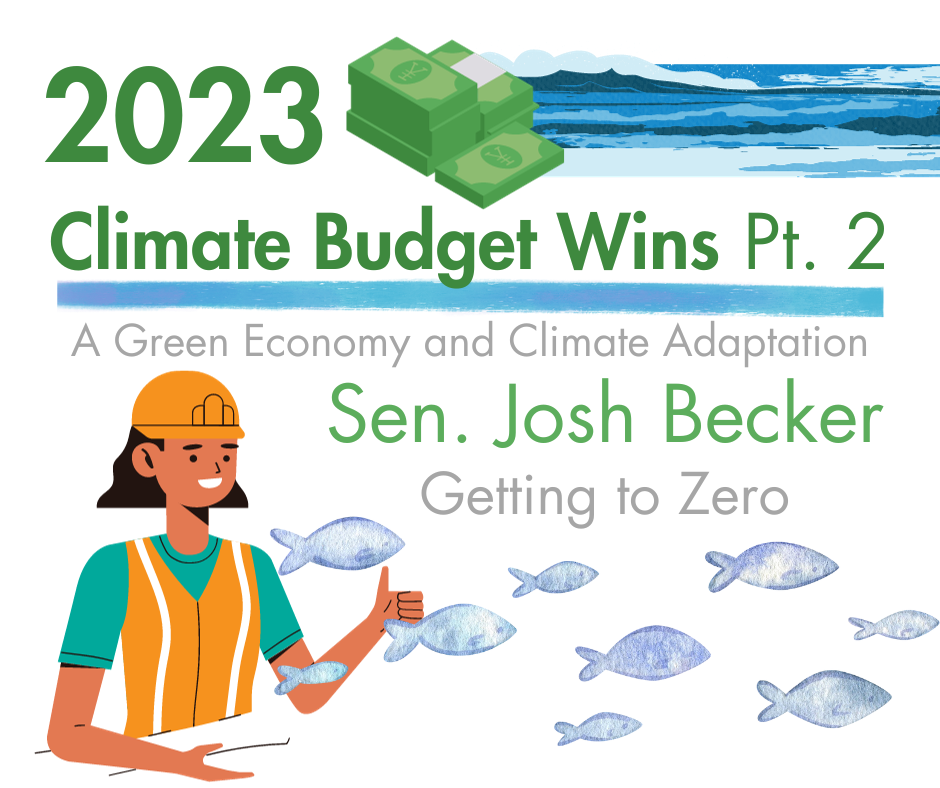
In this next post, I am covering two more critical climate buckets: growing a climate and clean energy economy and jobs, and investing in climate adaptation to future-proof our natural resources. As the Chair of the Senate Budget Subcommittee No. 4, I am prioritizing working to invest in high-quality jobs and supporting green growth, as well as investing into future climate adaptation to prevent any losses to life and the economy.
Climate Change Economy
Transitioning to a greener economy represents a pivotal moment and an incredible opportunity for California to create new jobs, grow the economy and allow for industry to be climate pioneers. This budget ensures that it is possible for Californians to participate in this new economic landscape.
- $2.3 million for Zero Emission Jobs Roadmap at Office of Planning and Research. This budget investment will help transition existing workers in the fossil fuel industry into new green jobs, by ensuring we maintain and invest in high-quality workforce training and transition.
- $25 million for the Enteric Fermentation Incentive Program. 11% of California’s greenhouse gas emissions consist of methane. A major source of methane (67% in the United States) is the burps that come from cows as they digest, in a process called Enteric Fermentation. This program will provide incentives for cattle farmers to put additives in their cattle’s food like seaweed that have been proven to inhibit the microorganisms that produce methane, therefore reducing methane emissions from cattle. This will help the agricultural industry continue to pioneer on industry reductions of greenhouse gasses.
Climate Change Adaptation
With the effects from extreme weather caused by climate change already being felt around the world, including right here in the 13th Senate District, action is needed to protect against the most immediate threats that climate change poses. These measures include programs to provide direct relief and planning for the future to reduce the risk of natural disasters.
- $2.2 billion for fire suppression, training, and fighting. As wildfire become more extreme and frequent as a result of climate change, California is bolstering its firefighting and prevention capacity to prepare for wildfires. This includes increase the number of training centers, research into better firefighting methods, and much more. In addition, this budget allocated $5 million for monitoring and research at CalFire. One of my top legislative priorities has been to ensure our fire agencies are investing into leading cost-effective forms of new fire prevention, detection and suppression technologies. The
- $378.2 million for coastal protection programs. Sea level rise adaptation and coastal resilience are a critical priority for the state, as climate change threatens populations and ecosystems in our coastal regions. These programs span sea level rise adaptation and planning projects to decrease vulnerability, working to protect biodiversity from climate changes, ensuring outdoor access, and much more.